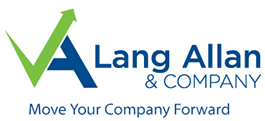Owning a real estate business comes with a host of responsibilities, including understanding your balance sheet. A company’s balance sheet reports a company’s assets, its liabilities and shareholders’ equity at a specific point in time. A well-formatted balance sheet can provide an early alert to problems in the company’s overall financial health and show whether a property is becoming more or less profitable than expected.
Balance sheets look different for owners who purchase property to rent than for owners who purchase property to develop and sell.
Keep in mind that balance sheets can be as simple or as detailed as the owner wishes. The key is designing the balance sheet to provide and track any necessary information.
Here is an overview of the basic items that should be on each type of balance sheet:
Rental Properties
Owners who plan to own a property and rent it for the foreseeable future, such as owners of a multifamily residence, need to account for four main categories:
- Cash accounts. The value of assets that are cash or can be converted into cash immediately.
- Escrow accounts. Holding accounts for taxes and insurance.
- Accounts receivable. The rent tenants pay every month.
- Liability accounts.
- Security deposits. Security deposits should be maintained in a separate account. At the end of the lease, depending on the condition of the property, some or all of the security deposit is returned to the tenant.
- Accounts payable.
- Long-term loans such as mortgages.
- Invoices for services, maintenance, utilities, and any other operating costs.
- Salaries for property managers and other employees.
The property owner’s profit is the amount that is left after all expenses are paid. If the owner needs to provide additional funds to cover expenses, the property is operating at a loss.
Development Properties
Property owners who buy property with the intent to renovate or develop it and then sell it look for different things on their balance sheets. The overall goal of the balance sheet is the same — measuring profit and loss — but additional factors need to be measured, including:
- Cash accounts. Readily available cash.
- Deposit receivables. Sometimes called customer receivables, this is cash paid to the company for goods or services that have not yet been provided. These deposits are initially recorded as a liability since they must be returned if the company does not fulfill its obligation.
- Construction in progress. Also called work-in-progress (WIP), accounts, these accounts are divided into hard costs and soft costs:
- Hard costs (i.e., costs associated with the actual physical construction). For example, demolition, excavation, foundation building and hazardous material abatement.
- Soft costs (i.e., essential costs that are not tied to the actual physical production of the project). For example, architects, mechanical and structural engineering, permits, approvals and inspections, insurance, legal and accounting costs, and marketing.
- Accounts payable:
- Invoices for services, maintenance and utilities.
- Payments to vendors.
- Retainage payable. Retainage is the amount held back from a subcontractor during the construction process. Generally, 10% is withheld from each subcontractor until the contract work is completed to the property owner’s satisfaction, at which time the amount is returned to the subcontractor.
- Financing costs:
- Predevelopment financing costs include bridge loans, appraisal fees and the like.
- Financing costs acquired after a construction loan is obtained include the mortgage recording tax, construction loan interest and broker fees.
- Short-term debt (e.g., recurring debt).
- Long-term debt (e.g., mortgages).
After the property is developed and sold, the proceeds of the sale go toward paying any remaining debt on the project, such as loans and construction costs. Once that is done, any remaining proceeds are a profit to the owner.
